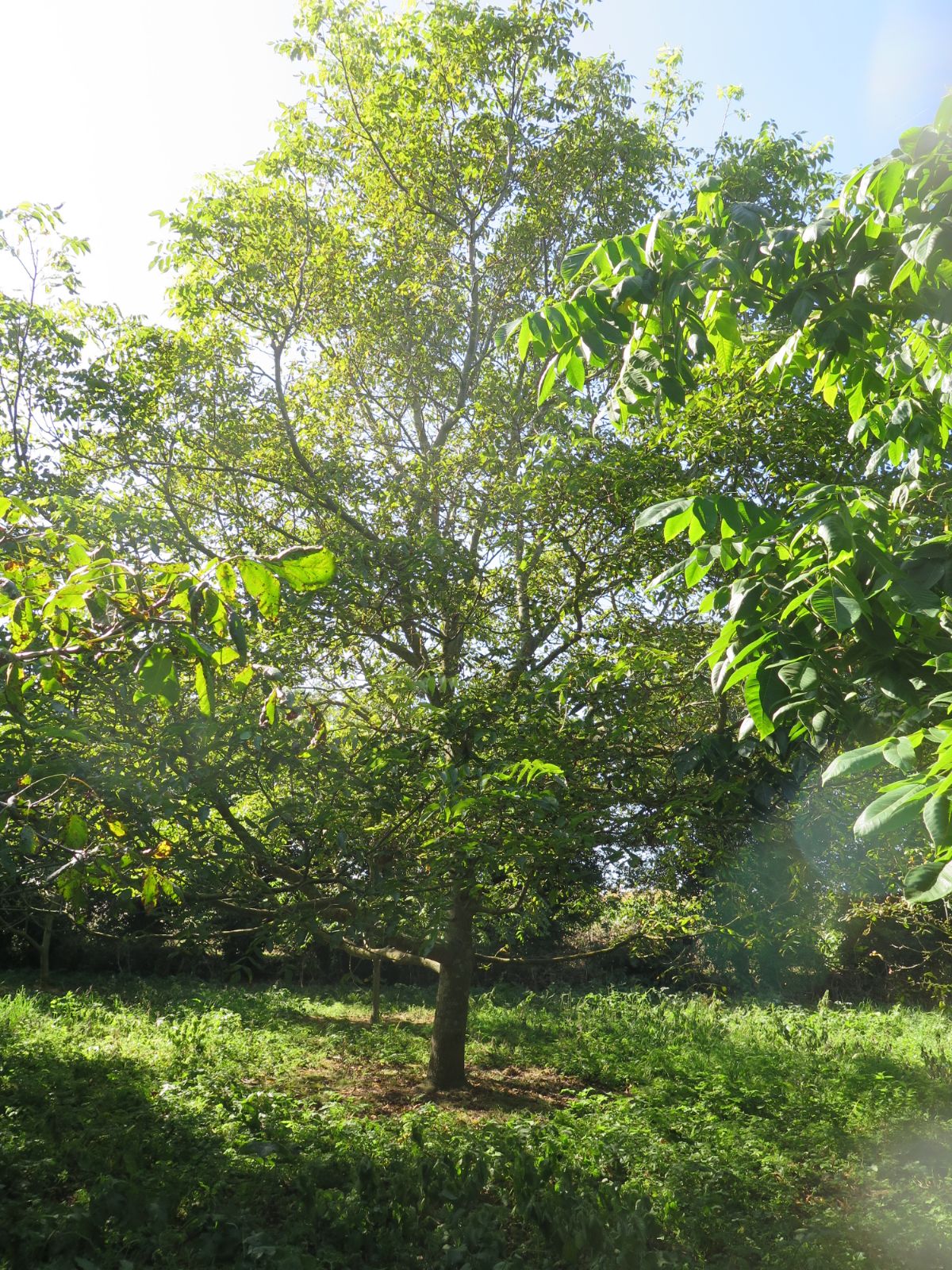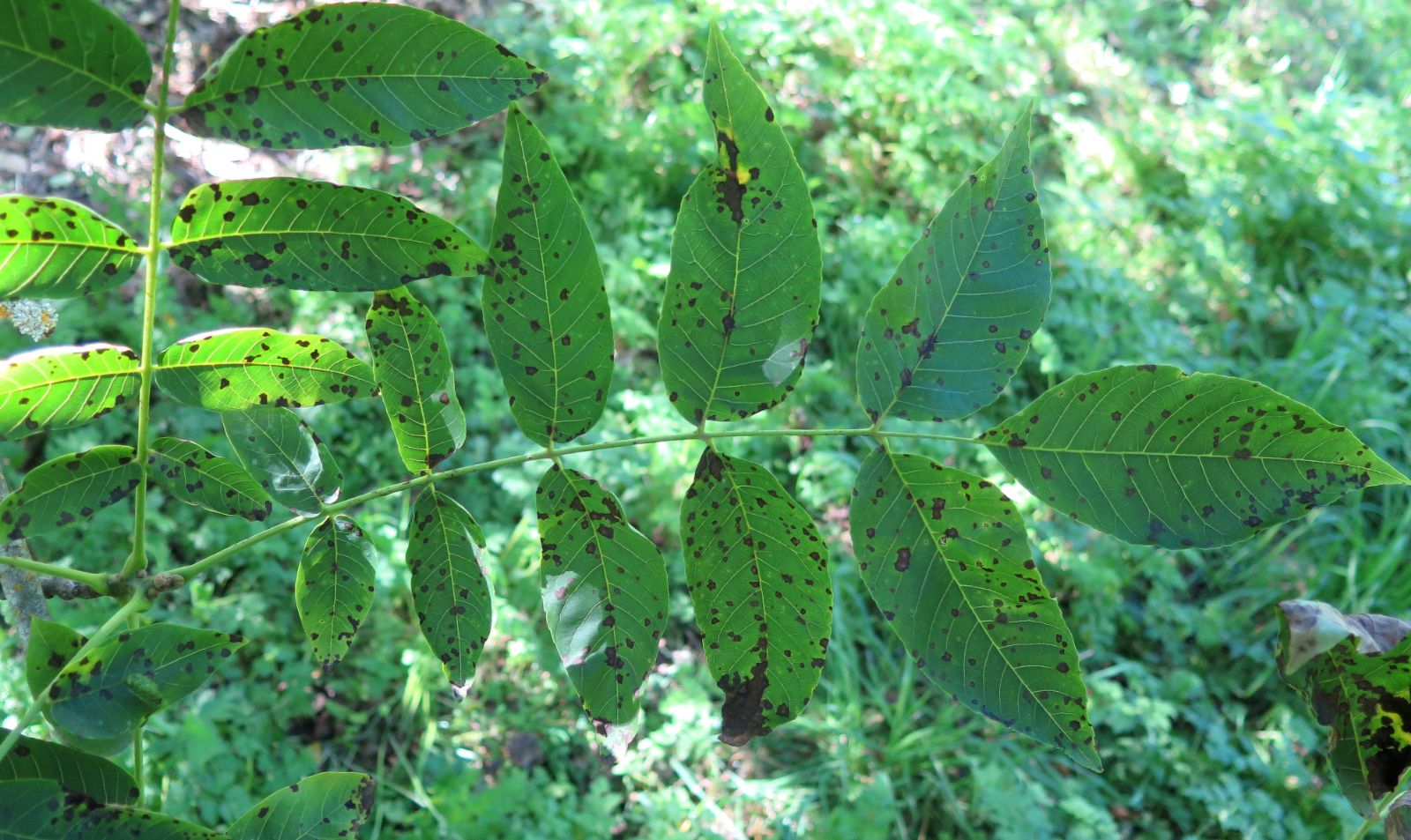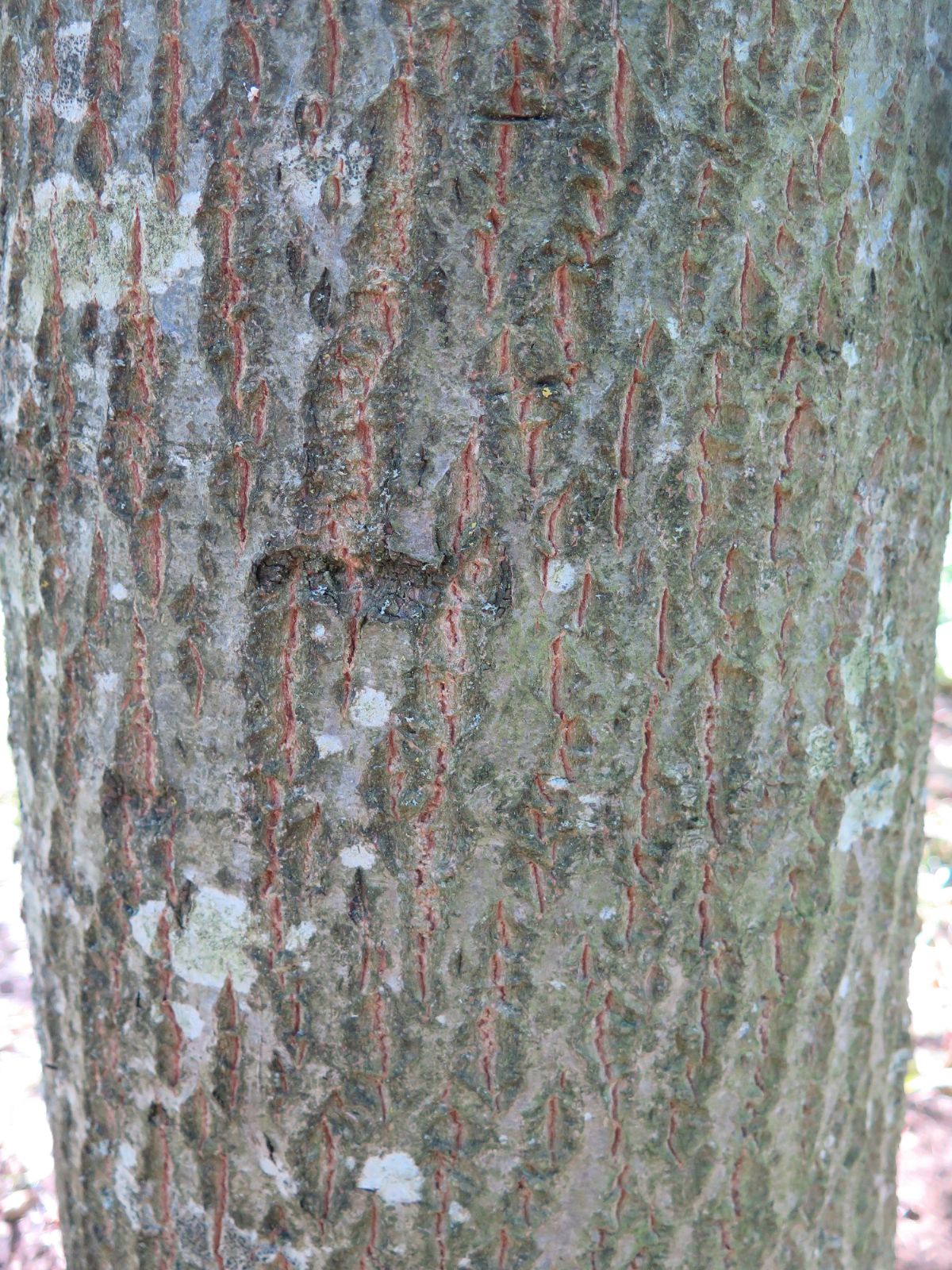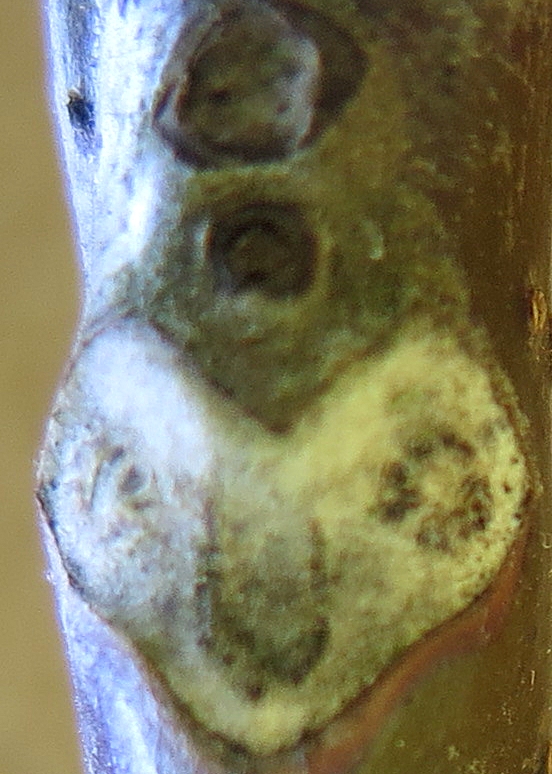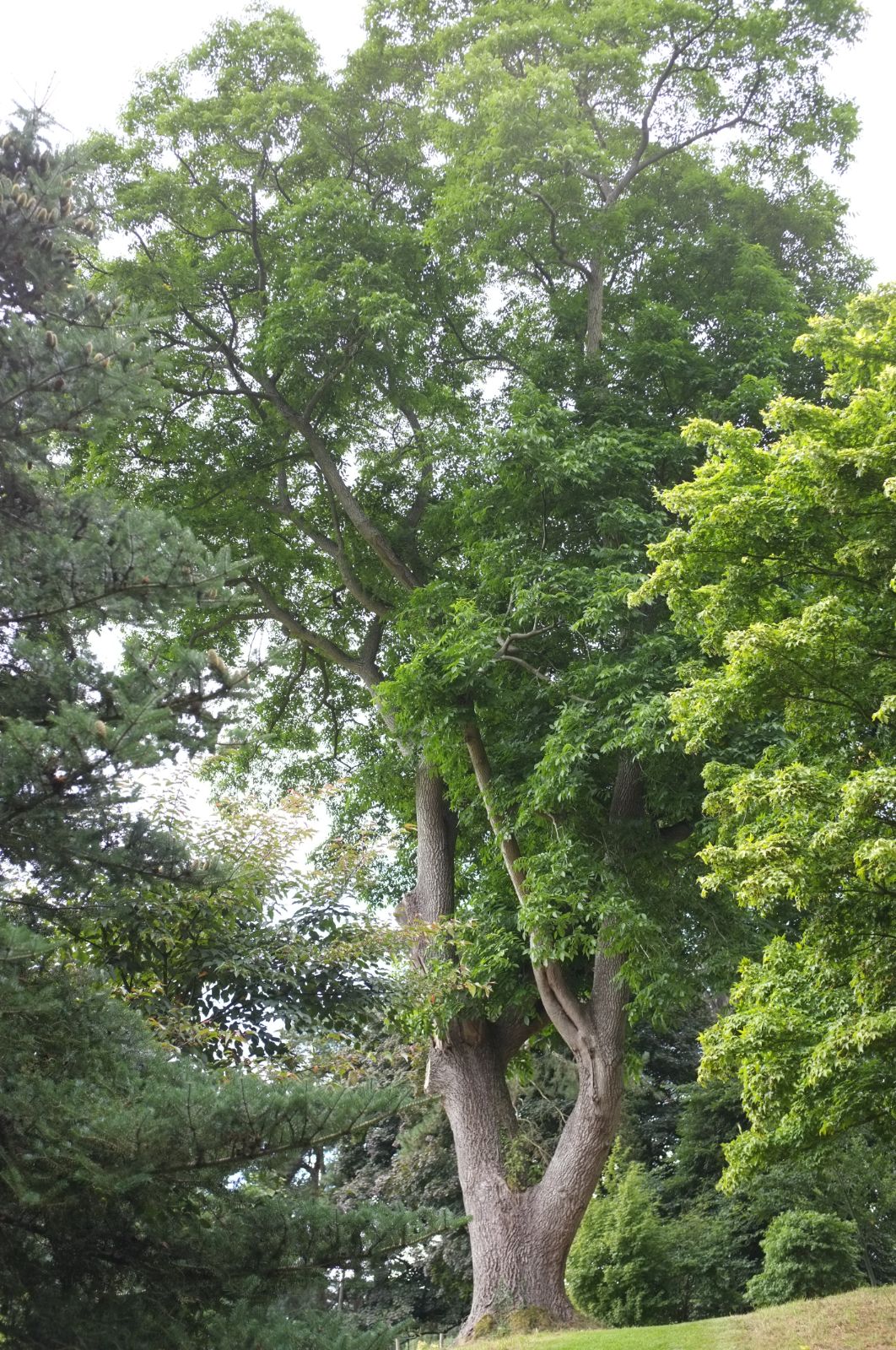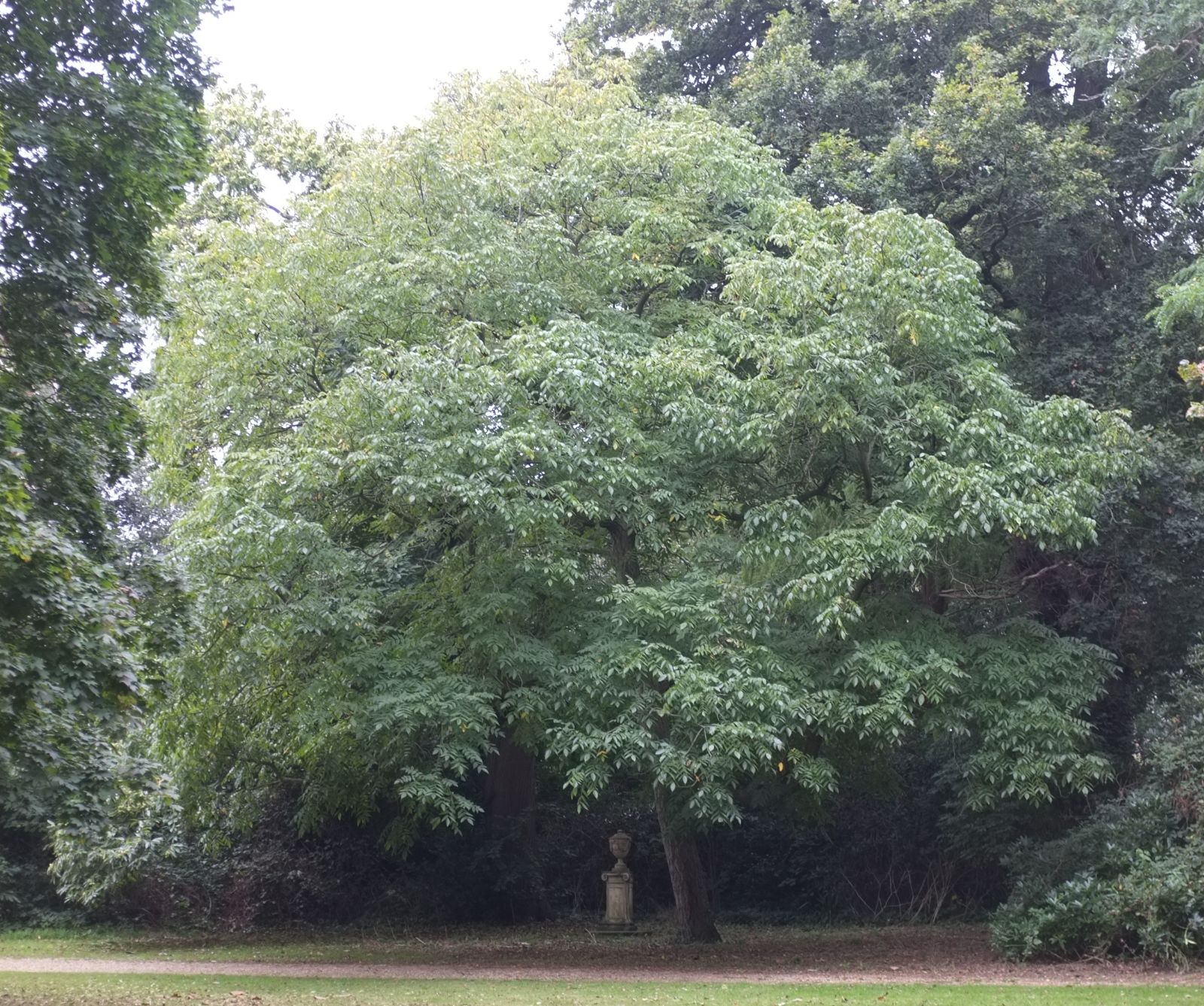Juglans × intermedia
Sponsor
Kindly sponsored by
a member of the International Dendrology Society
Credits
Julian Sutton (2019)
Recommended citation
Sutton, J. (2019), 'Juglans × intermedia' from the website Trees and Shrubs Online (treesandshrubsonline.
Genus
Synonyms
- Juglans intermedia var. pyriformis Carr.
- Juglans regia var. intermedia C. DC.
Other taxa in genus
- Juglans ailantifolia
- Juglans × bixbyi
- Juglans californica
- Juglans cinerea
- Juglans cinerea × mandshurica
- Juglans hindsii
- Juglans hirsuta
- Juglans major
- Juglans mandshurica
- Juglans mandshurica × regia
- Juglans Mexican Species
- Juglans microcarpa
- Juglans mollis
- Juglans nigra
- Juglans × notha
- Juglans olanchana
- Juglans Paradox hybrids
- Juglans pyriformis
- Juglans × quadrangulata
- Juglans regia
- Juglans sigillata
- Juglans × sinensis
- Juglans steyermarkii
Intermediate between its parents Juglans regia and J. nigra, and variable. This description of the important 19th century form ‘Vilmoreana’, taken from Elwes & Henry (1906), should be regarded as a starting point.
Young shoots glabrous. Leaf scars obcordate, three-lobed, deeply notched above. Leaflets 11–13, ovate-lanceolate, subsessile, apex acuminate, base rounded or tapering; serrations fine and shallow, directed forwards; lower surface green and glabrous, except for conspicuous tufts of pubescence in the axils of the main veins. Rachis glabrous in the upper leaves of the shoot, pubescent towards its base in the lower leaves. Fruit with the thick husk of J. nigra. Nut smooth, globose, thicker shelled and more deeply furrowed than that of J. regia.
Taking diverse published and personal observations together, it seems that almost any of these characters could vary somewhat from this description.
USDA Hardiness Zone 5-9
RHS Hardiness Rating H6
It seems that when Black Walnut and Common Walnut are grown together, spontaneous hybrids will appear, albeit infrequently. The major barrier to their crossing seems to be that there is little overlap in flowering time, with some individuals more liable to produce hybrids, presumably due to variation in phenology (Pollegioni et al. 2009). The settlement of eastern North America by Europeans brought Juglans regia along with other established crop plants; seed of the attractive and valuable J. nigra had found its way back to Europe by the 17th century, apparently initially as a novel ornamental species. By the 19th century, hybrids were becoming recognised on both sides of the Atlantic.
The earliest American record seems to have been an ‘immense’ tree found on a Virginia farm in 1888, with foliage and general habit resembling J. regia but nuts tending towards J. nigra (Elwes & Henry 1906). Hybrids began to be recognised in Europe in the 1850s. One, planted around 1805 on the estate of the French seedsman dynasty Vilmorin, in the Paris suburb of Verrières-le-Buisson acquired the cultivar name ‘Vilmoreana’. The original had reached 29 m in height by 1905 and was said to resemble J. nigra in habit (Elwes & Henry 1906). It produced rather few nuts but seedlings became established at the Arboretum de Segrez, at Kew and elsewhere. The Arboretum de Segrez tree was said to be fertile. There is a splendid specimen of ‘Vilmoreana’ planted in 1930 at Hergest Croft, Herefordshire (27 m × 155 cm, 2013 – The Tree Register 2019). It never fruits (L. Banks in Grimshaw 2004). Another at Birr Castle, Co. Offaly, Ireland was measured at 23 m × 45 cm in 2000 (The Tree Register 2019). A large example of J. × intermedia at Colesbourne Park, Gloucestershire (23.5 m × 93 cm – The Tree Register 2019) may well have the same origin, since a specimen was sent there around the beginning of the 20th century by Maurice de Vilmorin (Elwes & Henry 1906).
A second strain was described by Carrière in the late 19th century; unhappily it carries the name ‘Pyriformis’, with potential for confusion with the Mexican J. pyriformis. This plant differs from ‘Vilmoreana’ in its glandular-hairy young shoots and longer stalked, pear-shaped fruits which otherwise resemble those of J. nigra (Elwes & Henry 1906). Specimens acquired as ‘Pyriformis’ can be seen at Kew (14 m × 49 cm in 2001, planted 1891) and Ryston Hall, Norfolk (13 m × 79 cm, 2019 – The Tree Register 2019).
Experiments with J. nigra as a plantation tree in central Europe from the 19th century onwards have resulted in hybrids being recognised among them as the trees mature. Hrib et al. (2002) describe one example from the Czech Republic in useful detail and report others recognised only after felling in Germany: a buyer acquiring hybrid timber as Black Walnut did not query it.
The strain NG-23× RA (or simply NG23), a hybrid between specific strains of J. nigra and J. regia, is increasingly planted as a high quality forestry crop. It is produced in France, in seed orchards with a degree of selection (Vilmorin 2019), although tissue culture of elite clones is under investigation (Licea-Moreno et al. 2015). In colder areas it is favoured above MJ209 (a major × regia strain), which is better suited to Mediterranean climates (Pirinoble 2007).
Variability, and rather divergent reports of fertility in Juglans × intermedia are issues that need to be considered together. Fertility may be as much the result of neighbouring trees as of individual genotype. As a rule isolated walnuts set seed poorly since protandrous and protogynous individuals need to present for optimum pollination; this is compounded by differences in flowering times between different species. However intrinsically fertile a hybrid individual may be, it may set liitle seed if there is not a reliable pollinator nearby. The nature of that pollinator will also determine the appearance of the next hybrid generation. As backcrossed generations of J. × intermedia become mature, we may expect to see increasing variation in offspring, perhaps with cryptic hybrids emerging as an identification issue, as has been seen in Pterocarya × rehderiana. Using molecular markers, Pollegioni et al. (2009) discovered that among a sample of Italian specimens of J. nigra, one was in fact a triploid hybrid involving two J. nigra genomes and a single J. regia genome; it could not be recognised as a hybrid from its outward appearance.


